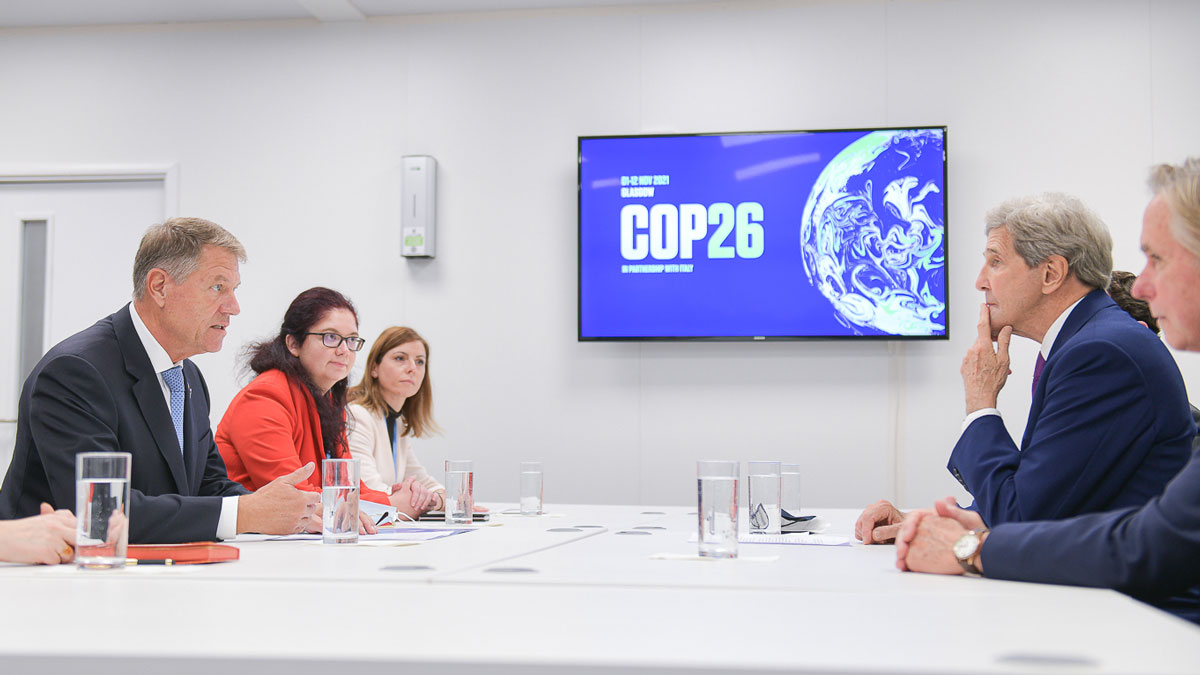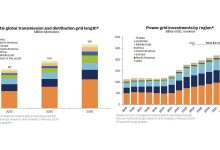EU Taxonomy: Natural Gas and Nuclear Energy, Transition Energy Label?
Europe has decided to obtain carbon neutrality by 2050 and reliance on Russian gas and increased energy prices are a crucial problem. At the same time, Brussels is expected to grant the transition energy label to natural gas.
This measure had to be decided before the end of 2021. Within the European Council of October 21 and 22, the European heads of state and government urged the European Commission to decide, by the end of November, the fate of nuclear energy and gas in the taxonomy and the classification of economic activities depending on their CO2 emissions and their consequences on the environment. EC President Ursula von der Leyen has promised that it would be done before December 16, 2021.
Unfortunately, this did not happen. The Brussels’ decision will depend on the ability of the nuclear energy and natural gas sectors to finance their future investments. And, if all goes according to plan, the European Commission will present its draft on January 18, 2022. Access to green funding and subsidies will be opened, providing a clear and competitive advantage to these crucial sectors, especially for the Eastern countries that rely on their gas investments to reduce their dependence on coal.
“We are very close to completing our works on the taxonomy act, which will include both gas and nuclear. We are going to need another ten days or two weeks for consultations with the Member States. I hope that we will be able to present our final proposal by mid-January,” Thierry Breton, commissioner for the internal market, has recently stated.
Once the taxonomy delegated act is adopted, it will enter into force within two months, unless there is an objection from MEPs as a majority or the Member States with qualified majority.
The topic gives rise to heated debates between the twenty-seven countries. For example, France actively promotes nuclear energy and countries such as Germany, Luxembourg, Austria remain reluctant to nuclear energy.
Gas is not ideal to reach carbon neutrality, but is better than coal
Inclusion of natural gas as transition energy is requested by some states and rejected by others, given the emissions of this fossil energy, for which the EU remains highly dependent on Russia.
“Gas is certainly not ideal for achieving carbon neutrality in the EU, but it is still better than coal and we need to be pragmatic: we will need both gas and nuclear energy to meet our 2030 and 2050 climate goals,” added Thierry Breton.
However, at the summit of heads of state and government in November 2021, there were deep disagreements.
Gas and nuclear: the fate of EU taxonomy, in the hands of Ursula Von der Leyen
Amid controversies on the classification of fossil gas and nuclear energy as ‘green’ or ‘transition’ activities under certain conditions, European Commission President Ursula Von der Leyen has prepared a list of sustainable investments that will be published soon. According to European media sources, it seems that the European Union is getting increasingly closer to the process of integrating nuclear energy and fossil gas in the sustainable funding of the Union in the taxonomy process. A set of rules is being prepared, meant to provide investors with a unique definition of what is sustainable and what is not sustainable, in order to channel more capital to sustainable businesses.
The list of activities that the EU considers ‘sustainable’ or ‘transitional’ investments is established in a ‘delegated act’ adopted by the European Commission, with all the modalities of implementation of the EU taxonomy regulation. However, according to several sources, after several failed attempts and an ever-increasing controversy on the role of gas and nuclear energy in the energy transition, Ursula Von der Leyen took matters into her own hands, according to the statement of Bas Eickhout, one of the architects of the taxonomy regulation, who confirmed that the file has reached the highest level of the European Commission. “This delegated act has now become a problem for the heads of the Commission, which makes sense, as it is a real test of the Commission’s credibility in terms of its responsibility for the European Green Deal,” he said.
The EU has adopted the first part of its taxonomy regulation, establishing environmental criteria for investments, especially in the field of renewable energy, maritime transport, and car manufacturing, which will apply from January 2022. However, no decision has been made yet regarding the most sensitive part of taxonomy from a political point of view, namely that related to investments in the natural gas and nuclear energy sectors. The fact that Ursula Von der Leyen deals personally with this issue is a proof of the intensity of the controversy around the potential classification of nuclear energy and gas as a ‘green’ or ‘transitional’ source of energy. The legislative proposals submitted by the European Commission usually come from one of the 27 commissioners before being discussed in the college and validated by the president of the Commission.
A divided Europe
EU Member States are visibly divided when it comes to this matter. While twelve states in Central and Eastern Europe support the inclusion of nuclear energy in taxonomy, other five Member States have expressed their opposition to this initiative, Austria even warning that it was “ready to challenge the decision at the European Court of Justice”.
The states in Central and Eastern Europe also make efforts for fossil gas to be included in taxonomy as a ‘transition’ activity, arguing that gas is a necessary cornerstone for the phasing out of coal.
Interestingly, a network of international investors, the United Nations Principles for Responsible Investment (PRI), has recommended that the EU not to give these energy sources a sustainability label.
PRI has warned that the inclusion of gas-fired power plants in the taxonomy “would seriously compromise” the role of the latter as an independent scientific tool, in accordance with Europe’s climate goals.
Although, in a report of the Joint Research Center (JRC) of the European Commission, the inclusion of nuclear energy is seen favourably, “the risks associated with the storage of nuclear waste, severe incidents and nuclear proliferation have not been sufficiently addressed,” said the members of the United Nations Environment Program (UNEP). The UN-supported initiative recommends that Europe explores alternatives, either by developing a proposal for sectors involved with the energy transition or extending the taxonomy “to recognize intermediate economic activities and transition pathways such as gas-fired power that operates below the ‘significant harm’ threshold of 270g CO2/kWh”.
A compromise proposal
Pascal Canfin, the chair of the European Parliament’s Environment Committee, has proposed a compromise whereby gas and nuclear power would be included in the taxonomy’s ‘transitional’ category, but only under specific conditions and with strict disclosure rules, that is by implementing a very clear safeguard system, keeping the scientific integrity of the taxonomy.
The cornerstone of Canfin’s proposal is a mandatory disclosure requirement for investors that would let them choose whether they want gas or nuclear included in their asset portfolio. “It would be like an opt-in system where a financial market participant would say: «gas and/or nuclear may be included in my investment portfolio, and that’s not a problem for me»,” explained the chair of the European Parliament’s Environment Committee.
Investors such as pension funds would have to say precisely whether they are using all the taxonomy, the taxonomy without gas, the taxonomy without nuclear or the taxonomy without gas or nuclear. That makes four possible categories. You tick the box, and you have the flexibility to say whether your investments include gas or nuclear. For gas specifically, the ‘transitional’ energy label would apply only when new plants replace coal in power generation and if emissions are below the ‘Do no harm’ threshold. Moreover, a sunset clause would apply as of 2030 after which investments in new gas power plants would no longer qualify.
Neutral technology
In the end, it seems increasingly likely that both gas and nuclear will be included in the list of sustainable investments as sources of transitional energy.
“We need more renewable energy. It is cheap, it does not generate carbon emissions and is local. We also need a stable energy source, which is nuclear, and an energy source while we make the transition, which is gas. Therefore, we will present our taxonomy proposal,” said Von der Leyen after the European summit in October 2021, where leaders debated the issue of rising energy prices.
The European Commission has always had a firm position on fossil gas: this energy source is necessary only as a transition fuel and shouldn’t be seen as an energy source that can be used in the long run. For nuclear, its qualification as a transitional energy source is still controversial, supporters saying that it should be labelled as ‘sustainable’ due to its low carbon footprint.
Nuclear energy, split into three categories
The problem is whether nuclear energy generation, waste disposal or fuel supply can be classified as sustainable activities for investors; therefore, the following delegated act could split nuclear activities into three categories: fuel supply, energy generation and nuclear waste.
Although none of these are carbon intensive, the management of radioactive waste and the possibility of a nuclear incident remains a cause of concern for the United Nation, which considers that these aspects are irrelevant and were not sufficiently explored.
“The materialization of the risks above could seriously harm most – if not all – of the five environmental objectives other than climate mitigation that are part of the EU Taxonomy Regulation,” the UN’s PRI said in a briefing note.
For their part, the representatives of the nuclear industry contend that the safety of nuclear installations is strictly regulated and that long-term solutions are being developed to manage radioactive waste. However, the long-term storage issue will soon be resolved, because the Onkalo deep geological repository based in Finland is due to be operational by 2025, they concluded.
Romania will have modular nuclear reactors by 2028
Romania is part of the group of countries that support nuclear energy and natural gas as elements of taxonomy. Combating climate change is a priority for Romania, which is committed to reducing greenhouse gas emissions. At the beginning of November 2021, US President Joe Biden and President Klaus Iohannis announced the plans of the two countries to build small modular reactors (SMR), the first of this type in Romania, in partnership with US NuScale Power. The partnership will bring the SMR technology in Romania, the most recent civil nuclear technology in this critical part of Europe, positioning the US technology as leader in the global race for SMR implementation. In addition to clean energy, this partnership will create tens of thousands of jobs in the US and Romania.

The trade agreement will include a 12-module NuScale plant, which will initially create more than 6,000 jobs in the US and Romania, with the potential to grow to 30,000 as the project develops. The Department of Energy reports that while most energy sectors lost their jobs in 2020, the sectors that continued to grow amid the pandemic were wind generation, battery storage and hybrid and electric vehicles. The implementation of SMR technology will contribute to the growth of a zero-carbon and zero-emission energy sector. Romania will include in the national energy production system Small Modular Reactors (SMR) by 2028, which will strengthen the partnership with the US in the civil nuclear field.
Klaus Iohannis said that this type of multi-level collaboration – technology development, production, operation support services – needs to be extended to other areas, especially in renewable energy and green mobility. The United States are the leader in the clean energy economy of the future, with initiatives in a few sectors and at all stages of innovation: research, development and implementation.
Globally, the International Energy Agency estimates that moving to a zero-emission economy would create 30 million jobs worldwide by 2030 in the energy, construction, and automotive sectors, of which 65% will be highly skilled jobs.







